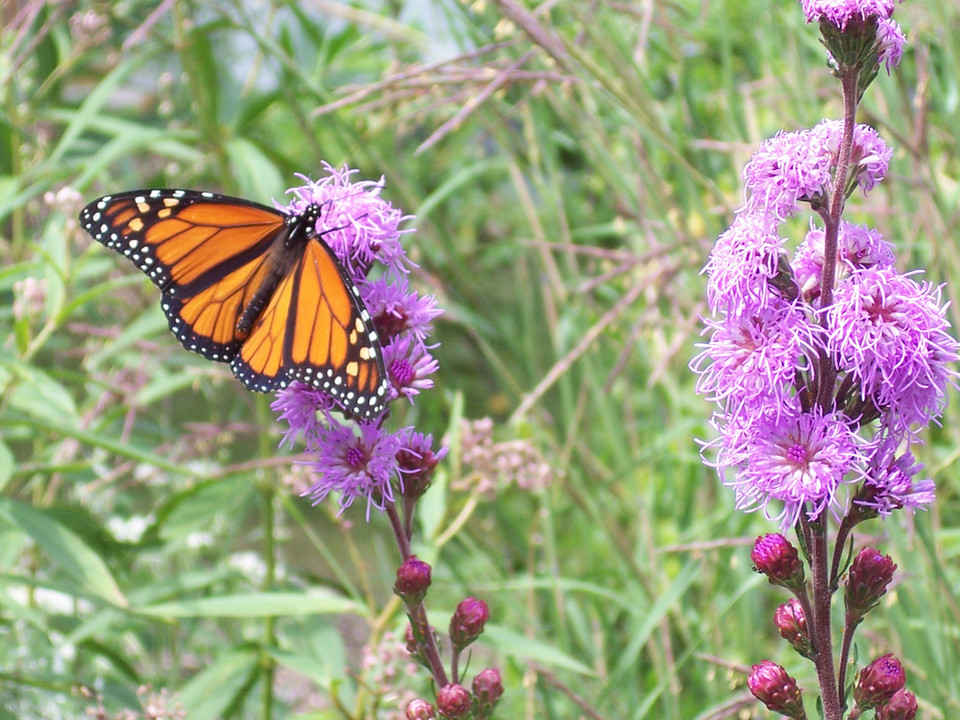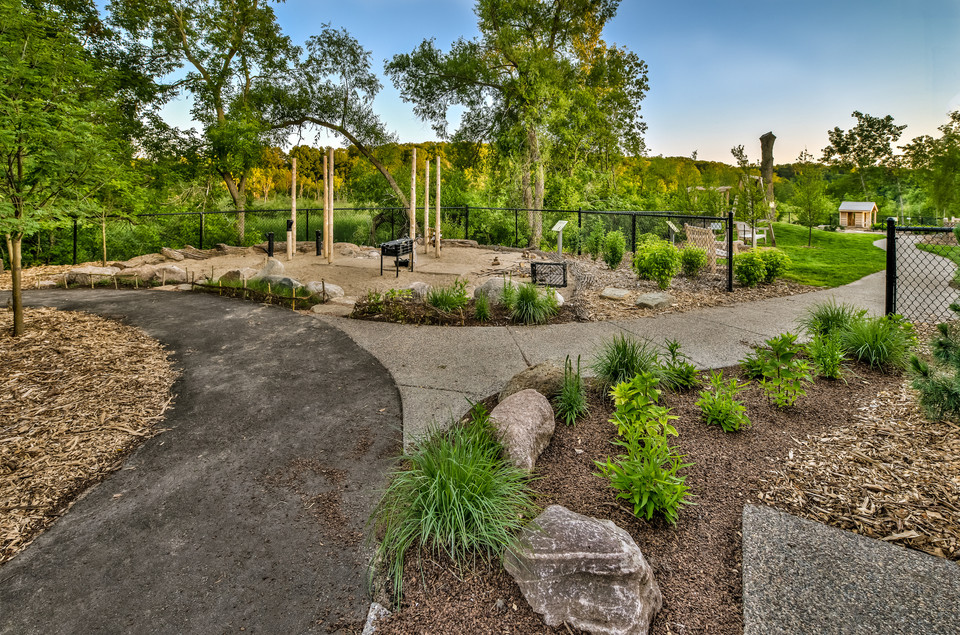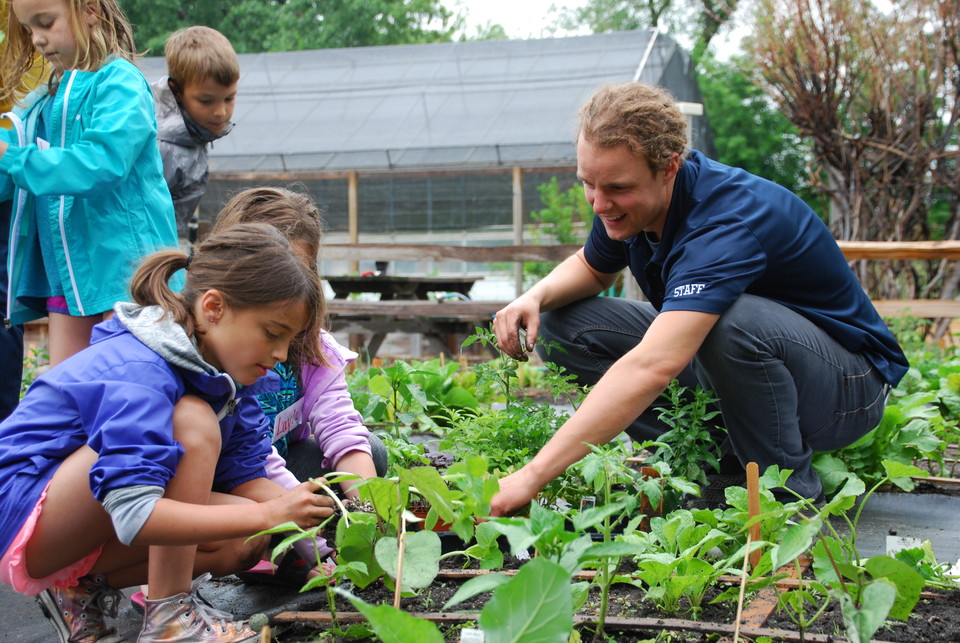Educational and Demonstration Areas

Bee Lawn Demonstration
The Arboretum Bee Lawn is located on Three-Mile drive just before the Hedge Collection parking lot. It is marked with a sign and the 5 individual plots are labeled. About half way around the drive, you will pass the Service Drive (sign indicating no entry except to Arboretum Staff), look for the Bee Lawn sign as you make the next turn heading east. There is a small pull off area just after the Bee Lawn, or park at the Hedge Collection parking lot about 1,000 feet ahead. The Bee Lawn is open and accessible any time the Arboretum is open.
Garden for Wildlife

From butterflies to bullfrogs, the Johanna Frerichs Garden for Wildlife is a working laboratory designed to demonstrate the most effective ways to attract birds, insects, mammals to the backyard by providing food, shelter, and a reproductive habitat.
Green Play Yard

Located by the Marion Andrus Learning Center, the Green Play Yard is both a wonderful play destination for young families and a rich "idea place" for preschools, childcare centers and family backyards. Its plantings and natural play features show how to bring 'nearby nature' to daily life for our youngest ones, at an age when they are growing and changing quickly and the impact is significant.
Green Roof

The Minnesota Landscape Arboretum’s Green Roof is part of the “Harvest the Rain” exhibit located in the Margot picnic shelter area, just north of the main parking lot. This previously ordinary picnic shelter now sprouts a colorful array of plants in an effort to highlight a growing trend in water runoff management. The green roof was installed at the Arboretum in the spring of 2009. This innovative roofing material demonstrates an increasingly popular method of water management and how it can be good for the environment, the home, and the landscape.
Hedge Display

Though not always in style, hedges, both sheared and unsheared, are an extremely useful way to use plants. Though our hedges are all woody plants (trees and shrubs) hedges they can be made of herbaceous plants as well (annual and perennial). Hedges can block unsightly views, direct views, define exterior spaces, and can even be used to create a maze!
Though some of our hedges are made from flowering shrubs, unless the plant blooms on old wood you will invariably prune off the flower buds. An easier way to create a hedge is to find a shrub that grows to the height you need, plant it close together and watch the hedge materialize after a few years with next to no pruning (an informal hedge). We have 31 genera, 57 species and 44 cultivars in this collection.
Interested in learning more? Visit Mary Meyer's "Hedges: A Brief History and the Minnesota Landscape Arboretum Hedge Collection"
Rain Gardens

Don’t all gardens collect rain? Of course, but these particular gardens collect parking lot runoff and allow it to settle into the planted swales. It’s a great way to remove our rainwater from hard surfaces instead of allowing it into the storm sewer and flooding and polluting our streams and wetlands. The parking lots have no curbs so all water runs to the swale. The plants are mostly native and must be able to withstand drought since they are planted in 6 inches of sandy loam over 2 feet of sand! Further, they must also be able to withstand short term flooding during heavy storms.
Shade Tree Exhibit
Learn more about the Shade Tree Exhibit
Wall Teaching Garden

The Wall Family Teaching Garden consists of a series of raised beds in an enclosed area off the Teaching Classroom. It is planted with herbs, vegetables and annual flowers and the fence area contains annual vines.
Weeping Trees

Some Arboretum collections are not generic but are planted by characteristic. The weeping tree collection consists of varieties or cultivars of 16 genera and 15 species and a total of 25 specimens. Some of the more dramatic weeping trees are the white pines (mentioned under pine collection), Red Jade weeping crabapple (Malus ‘Red Jade') and Uncle Fogy weeping pine (Pinus banksiana ‘Uncle Fogy") an Arboretum introduction. Most common of all weeping trees are the weeping willows.